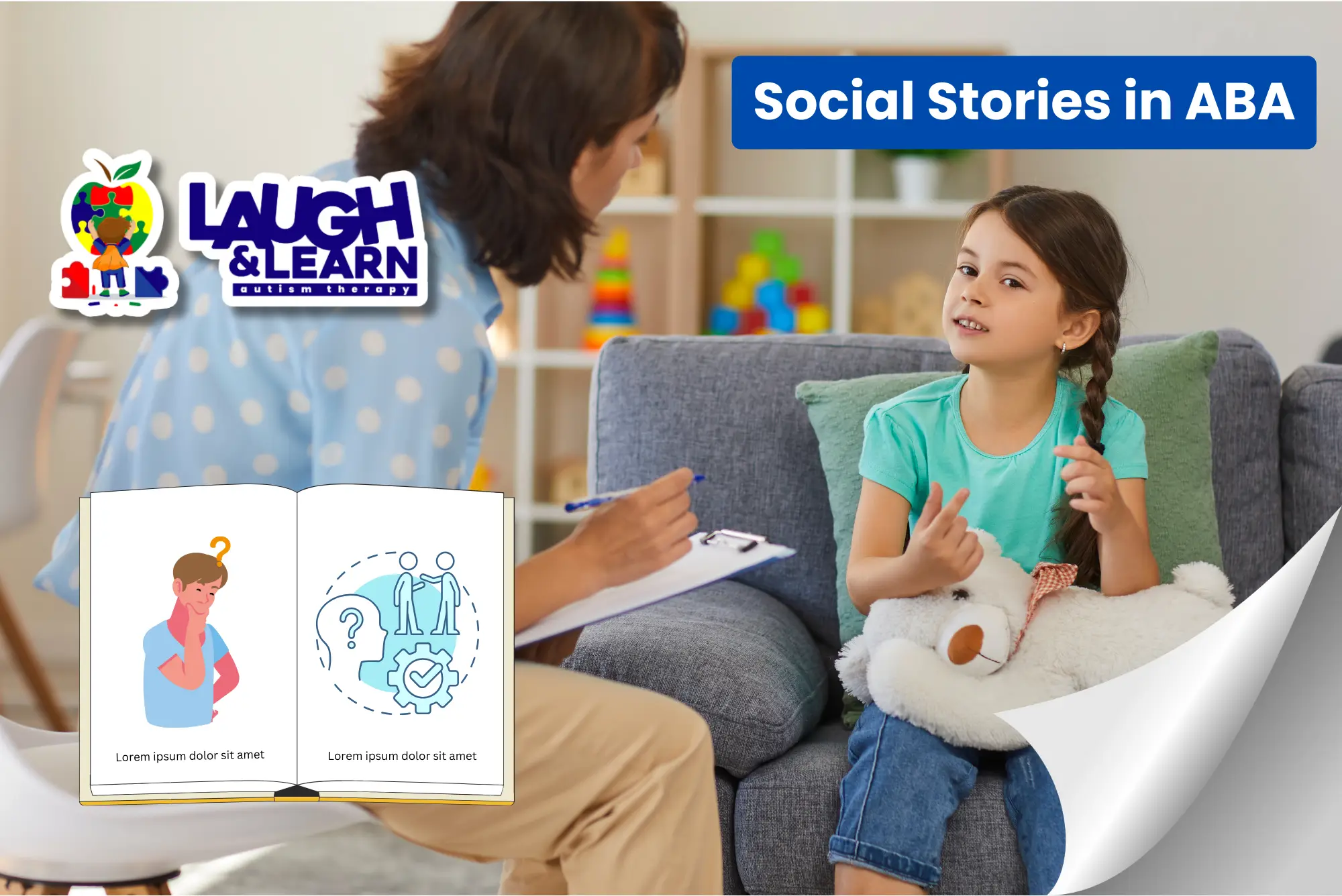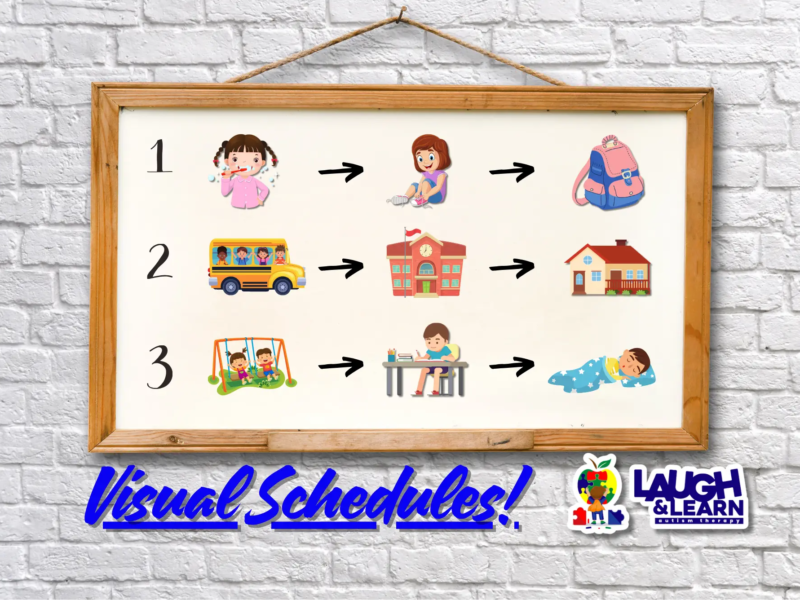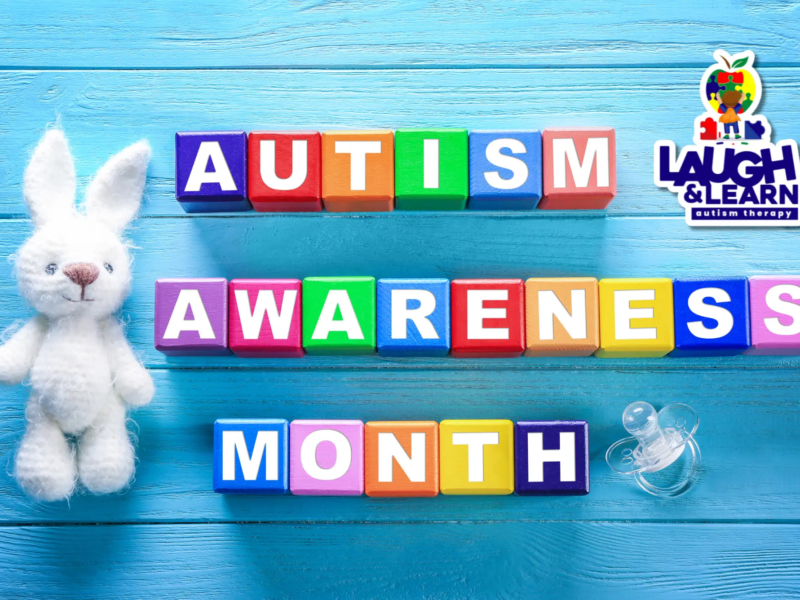Navigating the Social World: Understanding Social Stories and Their Impact on Children with Autism in ABA Therapy
Introduction
For children with autism, navigating the intricacies of social interactions can be a complex and sometimes overwhelming task. Social stories, a powerful tool rooted in Applied Behavior Analysis (ABA) therapy, have emerged as a valuable resource to help children with autism comprehend and navigate the social world. In this blog post, we delve into the concept of social stories, exploring what they are and how children with autism benefit from their use.
What Are Social Stories?
Social stories are individualized, descriptive narratives designed to help individuals with autism understand and respond appropriately to social situations. Developed by Carol Gray in the early 1990s, social stories aim to provide clear and concrete information about social cues, expectations, and appropriate responses in a given situation. These stories are tailored to the specific needs and preferences of the individual, offering a personalized approach to social learning.
The Structure of Social Stories
A typical social story follows a specific structure to ensure clarity and effectiveness:
- Introduction: The story begins by introducing the individual to the social situation or context being addressed.
- Description: A detailed description of the relevant social cues, events, and people involved follows. This section aims to provide a clear understanding of the situation.
- Perspective: Social stories often include a perspective-taking component, helping the individual understand the thoughts and feelings of others in the given social scenario.
- Guidance: Practical guidance and suggestions are provided to support the individual in navigating the social situation. This may include appropriate responses, coping strategies, or alternative behaviors.
- Reinforcement: Positive reinforcement and encouragement are woven into the narrative to reinforce the desired social behaviors.
How Children with Autism Use Social Stories
- Enhancing Understanding: Children with autism often struggle with interpreting social cues and understanding the unspoken rules of social interactions. Social stories serve as visual aids that break down complex social situations into manageable, comprehensible parts, facilitating a deeper understanding.
- Promoting Predictability: Predictability is crucial for individuals with autism. Social stories help create a predictable framework by outlining what to expect in different social scenarios. This predictability reduces anxiety and provides a sense of security.
- Teaching Appropriate Responses: Social stories offer explicit guidance on appropriate responses to various social situations. By presenting alternative behaviors and responses, these narratives empower children with autism to navigate social interactions with increased confidence and competence.
- Addressing Sensory Sensitivities: Some social stories may address sensory sensitivities associated with specific social situations. By acknowledging and offering strategies to manage sensory input, social stories help children cope with potential challenges, fostering a more positive experience.
- Encouraging Generalization: Social stories are designed to be flexible and adaptable. As children become familiar with the concept, they can apply the principles learned from one social story to similar situations, promoting generalization of social skills.
Understanding Social Stories in ABA Therapy:
In ABA therapy, social stories serve as a valuable and versatile tool for teaching and reinforcing social skills in individuals with autism. By combining the principles of individualization, visual supports, and positive reinforcement, ABA therapists leverage social stories to create a supportive and effective approach to enhancing social understanding and interactions.
- Individualization:
- Social stories are tailored to the individual’s unique characteristics, preferences, and challenges. ABA therapists carefully assess the specific needs of the person with autism to create narratives that resonate with their experiences.
- Visual Supports:
- Visual supports, such as images or pictograms, accompany social stories. These visuals enhance comprehension, as individuals with autism often benefit from visual aids. The combination of text and visuals provides a multi-modal approach to learning.
- Addressing Challenging Behaviors:
- ABA therapists use social stories to address challenging behaviors exhibited in social situations. By outlining appropriate behaviors and responses, social stories offer a constructive way to teach and reinforce positive social skills.
- Teaching Social Cues:
- Social stories break down social cues and expectations, making them explicit and understandable. Individuals with autism may struggle with interpreting non-verbal communication, so social stories provide concrete examples to enhance their understanding of social dynamics.
- Building Perspective-Taking Skills:
- Many social stories include a perspective-taking component, helping individuals understand the thoughts and feelings of others in a given situation. This aspect fosters empathy and encourages individuals to consider different viewpoints.
How Social Stories Are Implemented in ABA Therapy:
- Assessment and Individualized Planning:
- ABA therapists conduct thorough assessments to identify the specific social challenges faced by the individual. Based on this assessment, they develop personalized social stories targeting areas that require improvement.
- Setting Goals and Objectives:
- Social stories are aligned with the individual’s goals and objectives in ABA therapy. Whether the focus is on improving communication, reducing anxiety in social situations, or addressing specific behaviors, social stories are integrated into the overall treatment plan.
- Reinforcement and Generalization:
- Positive reinforcement is a key principle of ABA therapy. Social stories include reinforcement strategies to encourage and reward appropriate social behaviors. Additionally, therapists work towards the generalization of social skills, enabling individuals to apply what they’ve learned across various settings and situations.
- Collaboration with Caregivers:
- ABA therapists collaborate with caregivers and other support networks to ensure consistency in using social stories. Caregivers are often provided with guidance on how to implement social stories at home, reinforcing the lessons learned during therapy sessions.
- Monitoring Progress:
- ABA therapists regularly monitor the individual’s progress in applying social skills learned through social stories. Adjustments are made to the stories as needed, ensuring continued growth and development.
Some Practical Examples for Possible Uses of Social Stories
These examples showcase the versatility of social stories in addressing specific challenges and promoting positive behavior in various contexts for children with autism. By tailoring the narratives to individual needs, social stories become powerful tools for supporting children in navigating the complexities of social interactions and everyday activities.
- Transitioning Between Activities:
- Social Story: “Getting Ready for a New Activity”
- Focus: Helping a child understand the steps involved in transitioning from one activity to another, reducing anxiety and resistance.
- Morning Routine:
- Social Story: “My Morning Routine”
- Focus: Outlining the steps involved in getting ready in the morning, including dressing, brushing teeth, and having breakfast, to establish a predictable routine.
- Visiting the Doctor or Dentist:
- Social Story: “Going to the Dentist”
- Focus: Preparing a child for a visit to the dentist by explaining what to expect, addressing sensory aspects, and emphasizing the importance of oral health.
- Birthday Parties:
- Social Story: “Attending a Birthday Party”
- Focus: Helping a child navigate the social aspects of a birthday party, such as greetings, participating in games, and understanding gift-giving etiquette.
- Handling Unexpected Changes:
- Social Story: “Dealing with Changes”
- Focus: Teaching flexibility and coping strategies when plans unexpectedly change, emphasizing that it’s okay and providing alternative responses.
- Using Public Restrooms:
- Social Story: “Using the Bathroom in Public”
- Focus: Describing the steps involved in using a public restroom, addressing sensory sensitivities, and promoting appropriate behavior in a public setting.
- Playground Etiquette:
- Social Story: “Playing at the Playground”
- Focus: Teaching appropriate behavior on the playground, including taking turns, sharing, and following safety rules during play.
- Grocery Shopping:
- Social Story: “Going Grocery Shopping”
- Focus: Preparing a child for a trip to the grocery store by explaining the process, addressing sensory aspects, and emphasizing expected behaviors.
- Dealing with Bullying:
- Social Story: “Handling Bullying”
- Focus: Providing strategies for recognizing and responding to bullying, emphasizing the importance of communication and seeking help when needed.
- Classroom Rules:
- Social Story: “Classroom Expectations”
- Focus: Outlining the rules and expectations within the classroom setting, promoting appropriate behavior, and reinforcing positive interactions with peers and teachers.
- Family Gatherings:
- Social Story: “Family Get-Togethers”
- Focus: Preparing a child for family gatherings by explaining the social dynamics, expected behaviors, and providing coping strategies for potential sensory challenges.
- Public Transportation:
- Social Story: “Taking the Bus”
- Focus: Guiding a child through the process of taking public transportation, including waiting, boarding, and appropriate behavior during the journey.
In Conclusion
Social stories have proven to be a valuable and empowering tool for children with autism, fostering social understanding, confidence, and successful navigation of social scenarios. As we recognize the unique strengths and challenges of individuals with autism, the incorporation of social stories into their support toolkit exemplifies a commitment to promoting inclusive and supportive environments for all. By embracing the power of social stories, we take a significant step towards building a more understanding and empathetic society.
For another great article about Social Stories check out this one from the National Autistic Society (UK)



